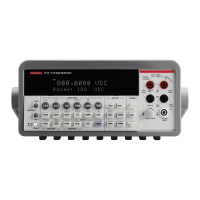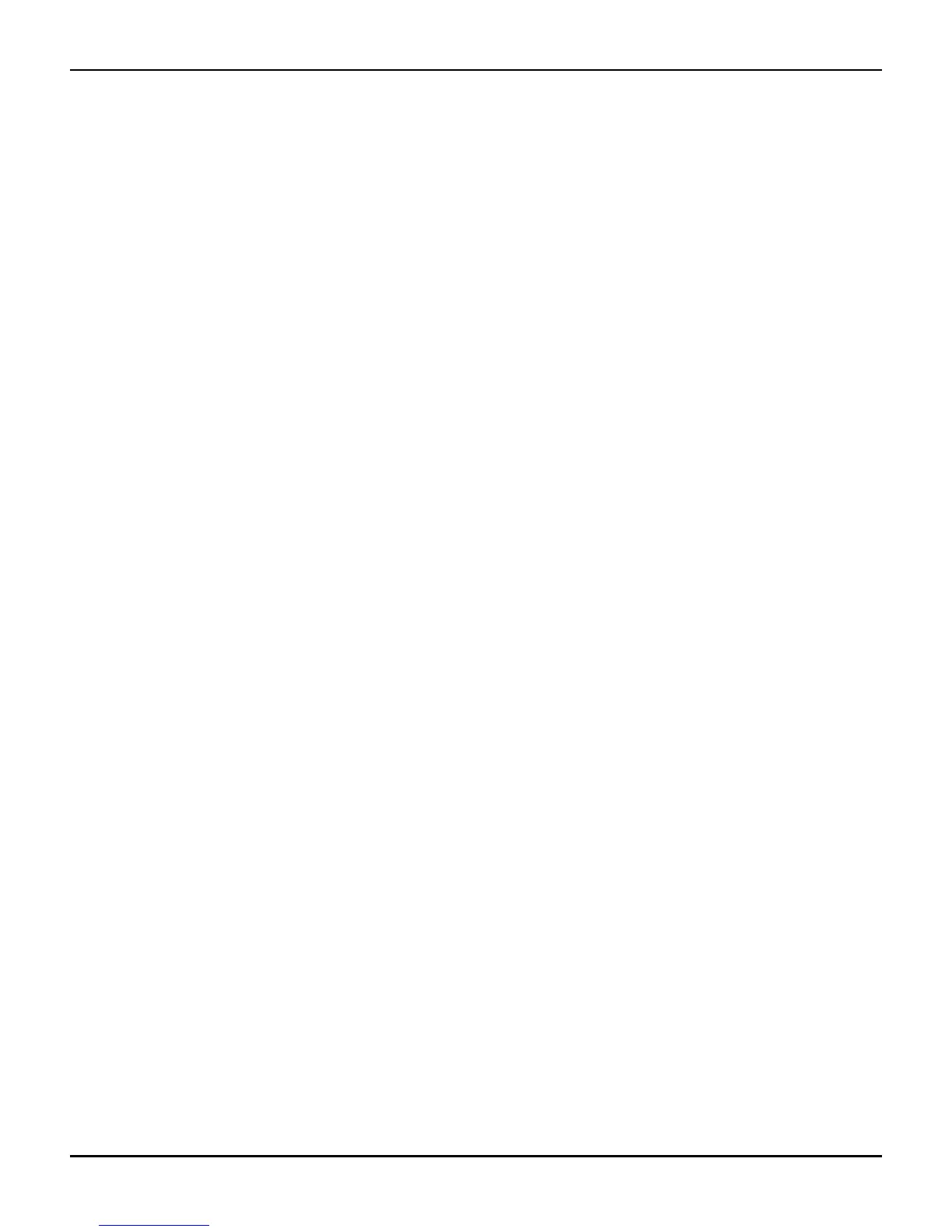2100-900-01 Rev. D / September 2011 Return to Section Topics B-5
Model 2100 6 1/2-Digit Resolution Digital Multimeter User’s Manual Appendix B: Remote Interface Reference
Discrete parameters
Discrete parameters are used to program settings that have a limited number of values (i.e., BUS,
IMMediate, EXTernal). They have a short form and a long form just like command keywords. You
can mix upper- and lowercase letters. Query responses will always return the short form in all
uppercase letters. The following command uses discrete parameters:
TRIGger:SOURce {BUS|IMMediate|EXTernal}
Boolean parameters
Boolean parameters represent a single binary condition that is either true or false. For a false
condition, the multimeter will accept "OFF" or "0". For a true condition, the multimeter will accept
"ON" or "1". When you query a Boolean setting, the instrument will always return "0" or "1". The
following command uses a Boolean parameter:
INPut:IMPedance:AUTO {OFF|ON}
String parameters
String parameters can contain virtually any set of ASCII characters. A string must begin and end
with matching quotes; either with a single quote or with a double quote. You can include the quote
delimiter as part of the string by typing it twice without any characters in between. The following
command uses a string parameter:
DISPlay:TEXT <quoted string>
Output data formats
Output data will be in one of formats listed below.
Types of output data
• Non-reading queries
• Single reading (RS-232)
• Multiple readings (RS-232)
Output data format
• < 80 ASCII character string
• SD.DDDDDDDDESDD<nl>
• SD.DDDDDDDDESDD,...,...,<nl>
• SD.DDDDDDDDESDD<cr><nl>

